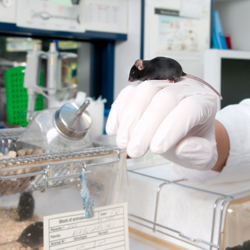Pre-clinical Liver Injury Markers:
The most common traditional biomarkers of drug-induced liver injury (DILI) are alanine aminotransferase (ALT) and aspartate aminotransferase (AST). They are preliminary biomarkers, but they have several limitations. During drug development process, transaminase increases are commonly observed in the absence of evidence of injury to tissue, and, on the other hand, sometimes do not increase even when liver tissue injury is observed. The following markers recommended by Predictive Safety Testing Consortium are offered by us
- First set: ALT, AST, GLDH, MDH, PNP
- Second set: ARG-1, GST-alpha
- Third set: miR-122
Clinical Liver Injury Markers:
DILI is one of the most common adverse events and can sometimes result in liver failure in human. DILI can lead to restrictions on use, black box warnings following severe reactions, and the prelaunch and post market attrition of pharmaceuticals. Therefore, we have focused specifically on biomarkers that would predict early in the course of therapeutic treatment. These biomarkers will help pharmaceutical industry whether a patient might progress to serious liver injury or adapt, and thus safely continue with possible therapeutic treatment.
- First set: GLDH, MDH, GST-alpha, ARG-1, miR122
- Serum enzymes to monitor liver injury: ALP, 5’-NT, GGT, LDH, Creatine phosphokinase, cholinesterase
Nephrotoxicity
Most drugs found to cause nephrotoxicity exert toxic effects by one or more common pathogenic mechanisms. These include altered intraglomerular hemodynamics, tubular cell toxicity, inflammation, crystal nephropathy, rhabdomyolysis, and thrombotic microan-giopathy. Several possible drug-induced kidney biomarkers are under investigation.
First set: KIM-1, urinary IL-18, TFF3, urinary NAG, urinary GST-alpha, urinary NGAL
Pre-clinical Kidney: Phase I
European Medicines Agency (EMA), US Food and Drug Administration (FDA), and Pharmaceuticals and Medical Devices Agency (PMDA) Japan issued following test, can be utilized on a voluntary basis.
- First set: urinary beta2-microblobulin, urinary KIM-1, TFF-3
- Second Set: Rat toxicology studies to monitor drug-induced kidney injury.
- Third set: Serum cystatin c, RBP-4, GST-alpha, NAG, NGAL



